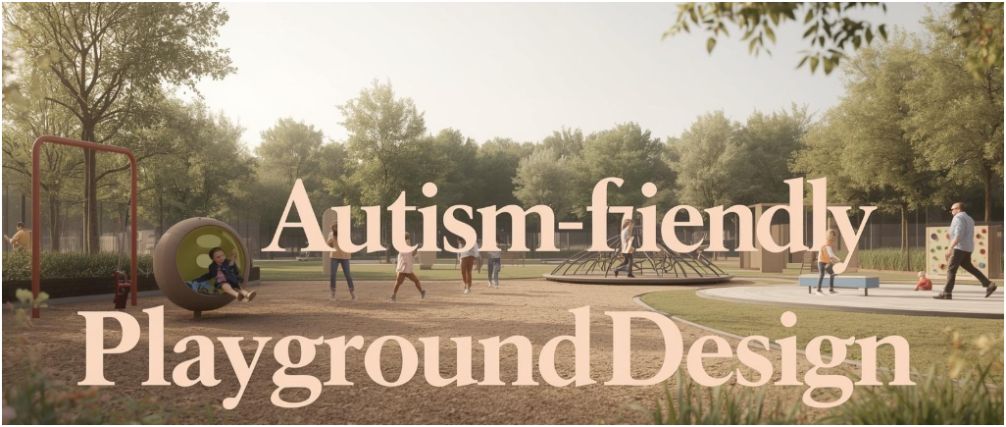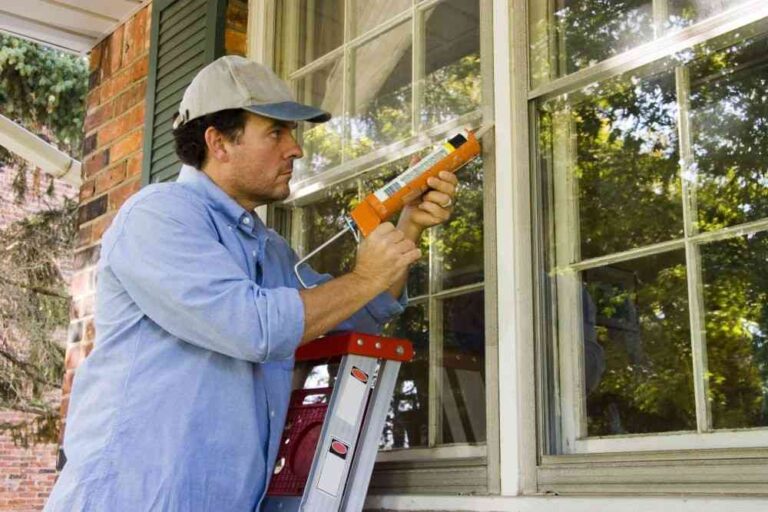Playgrounds are essential for children’s social, physical, and emotional development, but they can be overwhelming for children on the autism spectrum. Inclusive design can make these spaces accessible and welcoming, allowing every child to play, learn, and grow.
Understanding Autism Spectrum Disorder (ASD)

Autism Spectrum Disorder (ASD) is a developmental condition that affects how individuals communicate, interact with others, and experience the world around them. As the term “spectrum” suggests, autism presents differently in each person. While some may have significant support needs, others may be more independent.
A common characteristic among many individuals with autism is a difference in sensory processing. They might be hypersensitive (overly sensitive) or hyposensitive (under-sensitive) to sensory input like sounds, lights, textures, and smells. For example, the loud, unpredictable noises of a busy playground could be distressing for a child who is hypersensitive to sound. Conversely, a child who is hyposensitive might seek out intense sensory experiences, like spinning or swinging for long periods.
Social interaction can also be a challenge. Children with ASD may find it difficult to understand social cues, engage in imaginative play with peers, or navigate the unwritten rules of group activities. Providing opportunities for different types of play—including parallel play (playing alongside others) and solitary play—is essential.
Key Sensory Considerations
To design an effective playground for children with autism, it’s vital to consider their sensory needs. The goal is to create a balanced environment that offers both stimulation and tranquility, allowing children to self-regulate based on their individual needs.
Auditory Sensitivities
Loud, sudden noises are often a major source of stress for children with autism. The joyful screams, clanging equipment, and echoing sounds of a typical playground can be overwhelming.
- Design Solution: Incorporate natural sound-dampening elements like trees, shrubs, and soft-surfaced pathways. Consider installing musical elements that produce gentle, melodic tones, such as outdoor chimes or xylophones, which allow children to control the sounds they create.
Visual Sensitivities

Bright, flashing lights and visually cluttered spaces can be disorienting. Children with autism may be sensitive to harsh sunlight or overwhelming color schemes.
- Design Solution: Use natural, muted color palettes for equipment and surfaces. Incorporate shaded areas using canopies, trees, or covered structures to provide a break from bright sunlight. Avoid visually complex patterns and instead opt for simple, clean designs.
Tactile Sensitivities
Touch and texture play a big role in sensory experience. Some children may avoid certain textures, like rough sand or wet grass, while others may actively seek them out.
- Design Solution: Offer a variety of tactile experiences. Include sensory panels with different textures, sand and water play tables, and varied ground surfaces like soft rubber, smooth wood, and natural grass. This allows children to choose textures they find comforting or stimulating.
Proprioceptive and Vestibular Needs
Many children with autism benefit from activities that engage their proprioceptive sense (body awareness) and vestibular sense (balance and movement). These activities can be calming and help with self-regulation.
- Design Solution: Include equipment that provides deep pressure or rhythmic movement. Swings, spinners, trampolines, and climbing structures are excellent for this. Offering a range of swinging options, such as pod swings or high-backed swings, provides a sense of security while delivering vestibular input.
Essential Design Elements for an Autism-Friendly Playground

With a solid understanding of sensory needs, you can begin to incorporate specific design elements that create a supportive and engaging play environment.
Zoning for Different Energy Levels
Zoning is one of the most effective strategies for creating an inclusive playground. This involves dividing the space into distinct areas for different types of activities and energy levels.
- Active Zone: This area is for high-energy play. It can include climbers, slides, and swings. Placing this zone away from the entrance and quieter areas can help contain noise and boisterous activity.
- Sensory Zone: This section should be filled with sensory-rich activities, like sand tables, water features, musical instruments, and textured panels.
- Quiet Zone: A designated calm-down space is crucial. This area provides a retreat for children who feel overwhelmed and need a moment to themselves.
Quiet Spaces and Cozy Retreats

Every child needs a place to rest, but for children with autism, a dedicated quiet space is non-negotiable. These areas should feel safe, enclosed, and removed from the main action.
- How to Create Them: Small, covered structures, “nook” seating, or even a simple bench placed under a shady tree can serve as a quiet retreat. Pod swings, which offer an enclosed, cocoon-like feeling, are also an excellent addition. These spaces allow children to decompress before rejoining the fun.
Sensory-Rich and Calming Activities
The playground should offer a balance of sensory stimulation and calming activities.
- Stimulating Activities: Climbing walls provide proprioceptive input, while spinners and merry-go-rounds engage the vestibular system. Tactile panels and sandboxes offer rich textural experiences.
- Calming Activities: Gentle, rhythmic activities can be very soothing. Include single-person swings, rocking equipment, and cozy spots where a child can sit and observe.
Clarity, Predictability, and Visual Supports

A predictable environment helps reduce anxiety. Children with autism often thrive when they know what to expect.
- Clear Pathways: Use clearly defined pathways to guide children between different zones. Visual cues, like color-coding paths for each zone, can make navigation intuitive.
- Visual Schedules: Consider installing a simple visual schedule or map at the playground entrance. This can show a child what activities are available and where to find them, giving them a sense of control over their experience.
- Fencing: Enclosing the playground with a fence provides a clear boundary, which can be comforting for children and reassuring for parents, preventing wandering.
By integrating these thoughtful design principles, communities and playground companies in Utah and beyond can create spaces where every child feels welcome, safe, and free to be themselves.
Conclusion
Designing playgrounds for children with autism is about more than just compliance or accessibility; it’s about empathy and equity. It’s about recognizing that play is a universal right and that every child deserves a space where they can explore, connect, and thrive.






